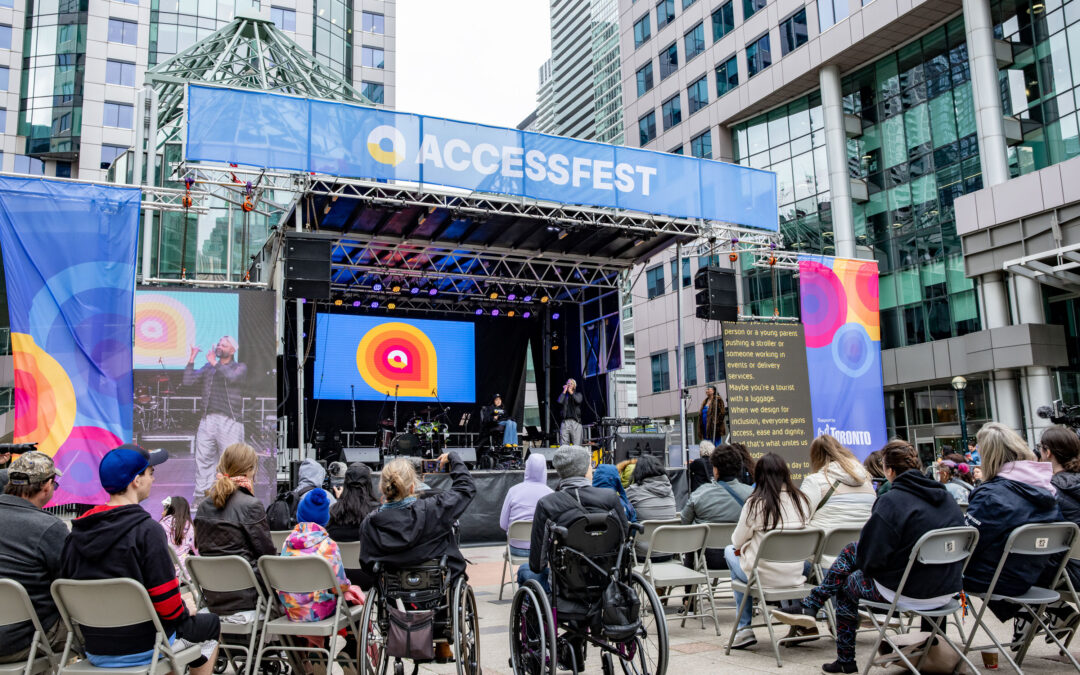Written by Simran Bhinder.
When I boarded my early morning flight from Winnipeg to Toronto, I expected sunshine and spring air. What I got instead were gusty winds and shivers – but none of that mattered. I wasn’t just attending an event. I was stepping into a movement.
AccessFest 2025 wasn’t just a festival – it was a living declaration of what accessibility looks like when disabled people lead. Held at David Pecaut Square in the heart of Toronto, this was Canada’s first outdoor festival fully dedicated to accessibility, disability culture, and inclusive design. And every single artist, speaker, panelist, and performer brought not only their talent, but also their lived experience of disability.
From comedy to policy, music to mindfulness, every aspect of the day was curated with access, joy, and equity in mind.
A Festival By Us, For Us
What made AccessFest stand out wasn’t just its programming – it was who was at the center. Every featured artist identified as disabled. We saw comedians like Courtney Gilmour, musicians like Mattmac and Martin Deschamps, high-energy performances from Crip Rave, and an ASL music workshop led by Matt Maxey.
Speakers and panelists included advocates and influencers like Taylor Lindsay-Noel, Maayan Ziv, and Spencer West – the latter also hosting the main stage. The Fireside Chat with Canada’s Chief Accessibility Officer, Stephanie Cadieux, brought a crucial policy lens to the heart of the festival.
Even the programming names – like Unfiltered AF Talks, NextGen AF, and Designed AF – reflected a refreshing, bold, unfiltered honesty about lived experience, leadership, and the realities of navigating the world with disability.
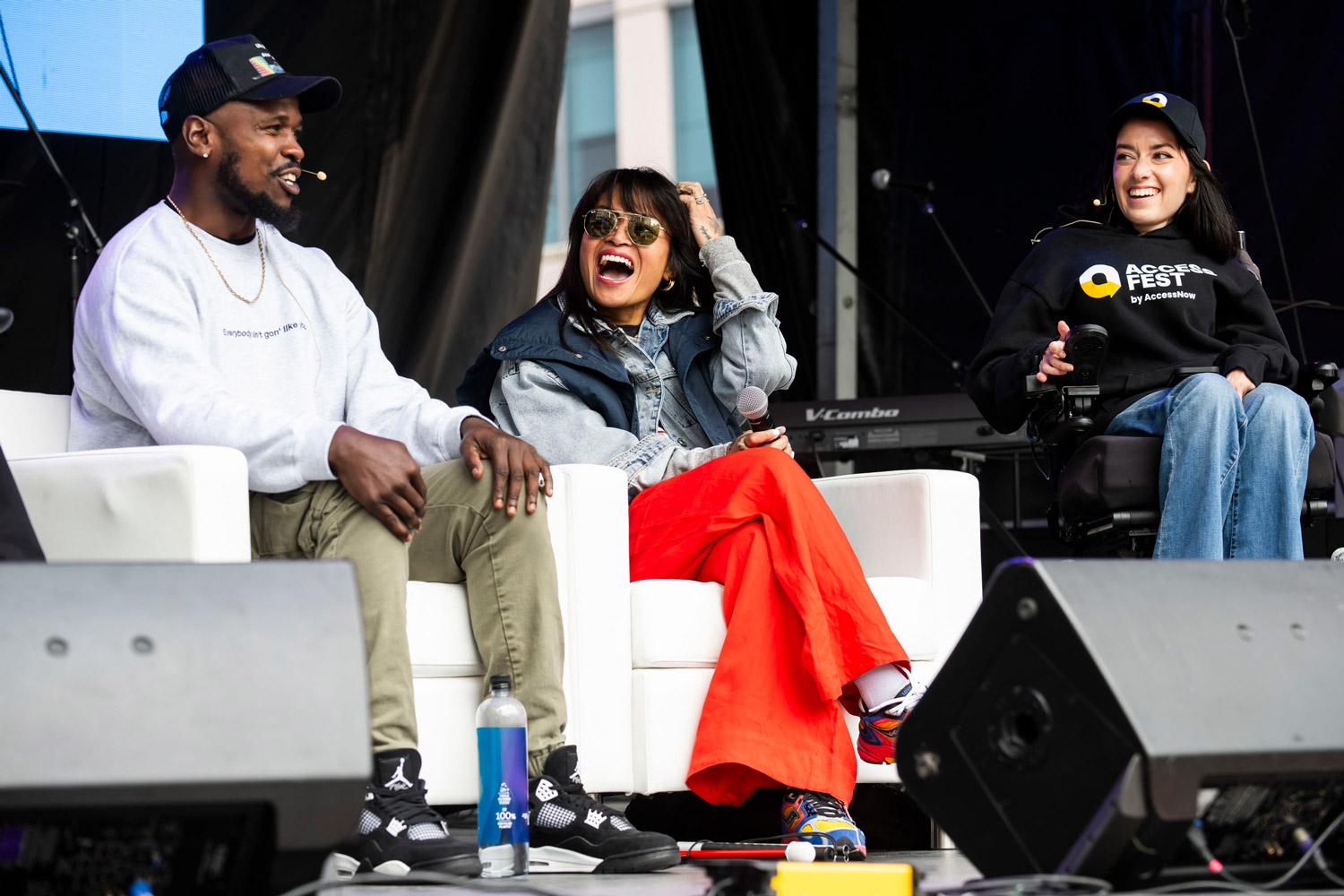
Volunteering and Belonging: No Trade-Off Needed
Thanks to support from the Alliance for Equality of Blind Canadians (AEBC), I had the chance to be both a participant and a volunteer, an experience that deepened my connection to the space. Volunteering didn’t mean missing out; it meant being embedded in the heart of the festival.
What struck me most was the diversity of volunteers. We weren’t just students or event staff. We were directors and founders of inclusive businesses, family members supporting loved ones with new disabilities, and professionals who had spent years in accessibility, advocacy, and design. Some came from deeply personal places, some from professional purpose, and others came simply because they cared.
We also welcomed postdoctoral students and research professionals. Some traveling across provinces, specifically to observe AccessFest as a model of community-led inclusion. They weren’t just studying systems. They were studying culture in motion.
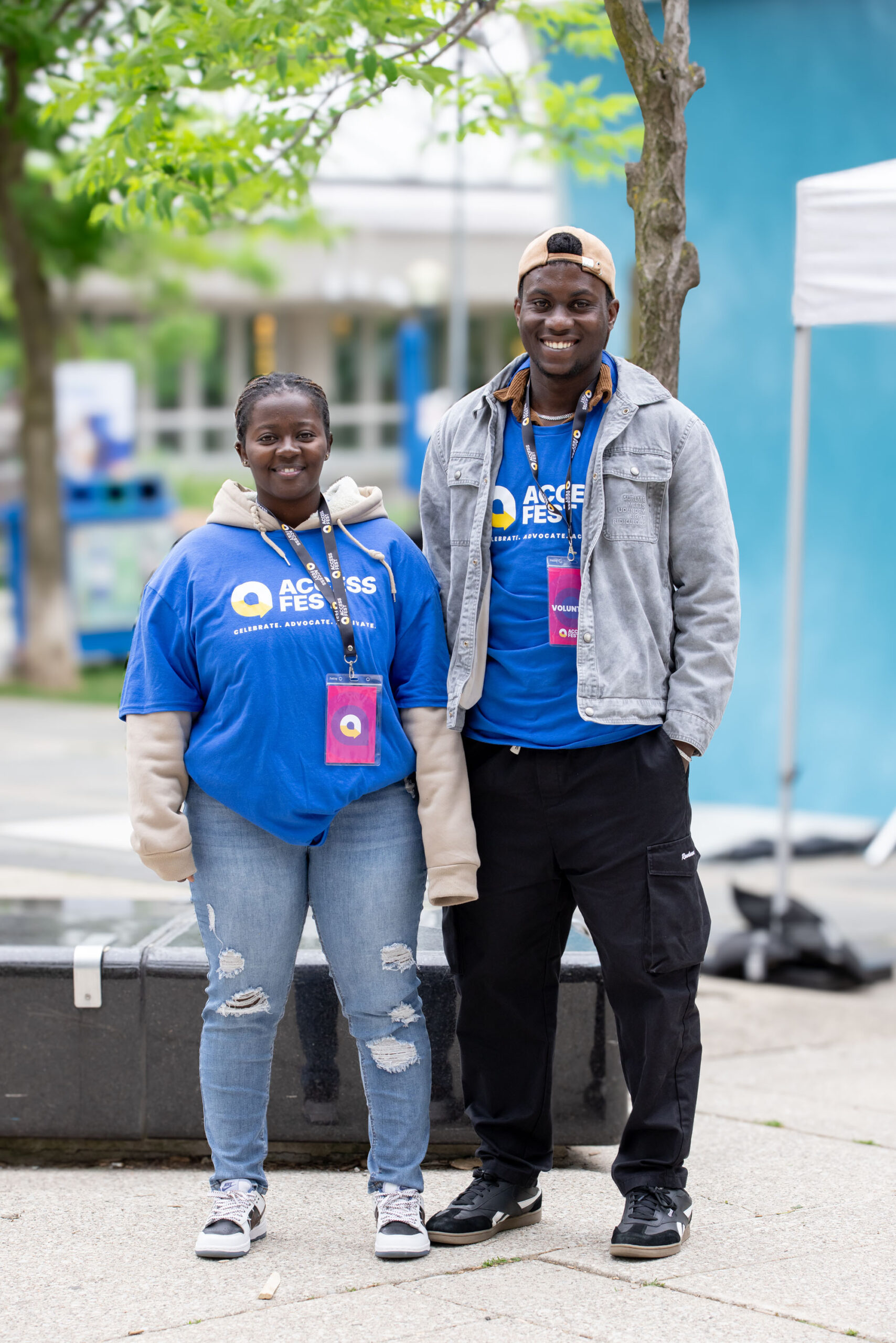
Trust Lives in The Details
What made AccessFest different was that it wasn’t just accessible on paper. It was built from the ground up with intentional design:
-
Pre-event flexible volunteer training and resource sharing.
-
Pre-event information sharing on how to arrive at the location of event.
-
ASL interpreters were present at all major events.
-
Sensory zones provided rest and regulation.
-
Transit services like TTC Wheel-Trans offered live demonstrations and continued service for attendees.
-
Multiformat communications, including live descriptive audio via FM transmission, transcripts, videos, and sighted guides were provided during the festival.
I supported guests at the Info Center, guided people to the MapMission tours, led by Jonathan Marriott, and even participated in one myself. My tour, “Street Life: Cafés, Patios & Everyday Access,” focused on assessing real-world accessibility in shared outdoor areas. These weren’t just symbolic audits. They were collaborative, hands-on experiences where even non-professionals were empowered to use accessibility language – “effective width,” “barrier-free access” – in ways that made learning stick.
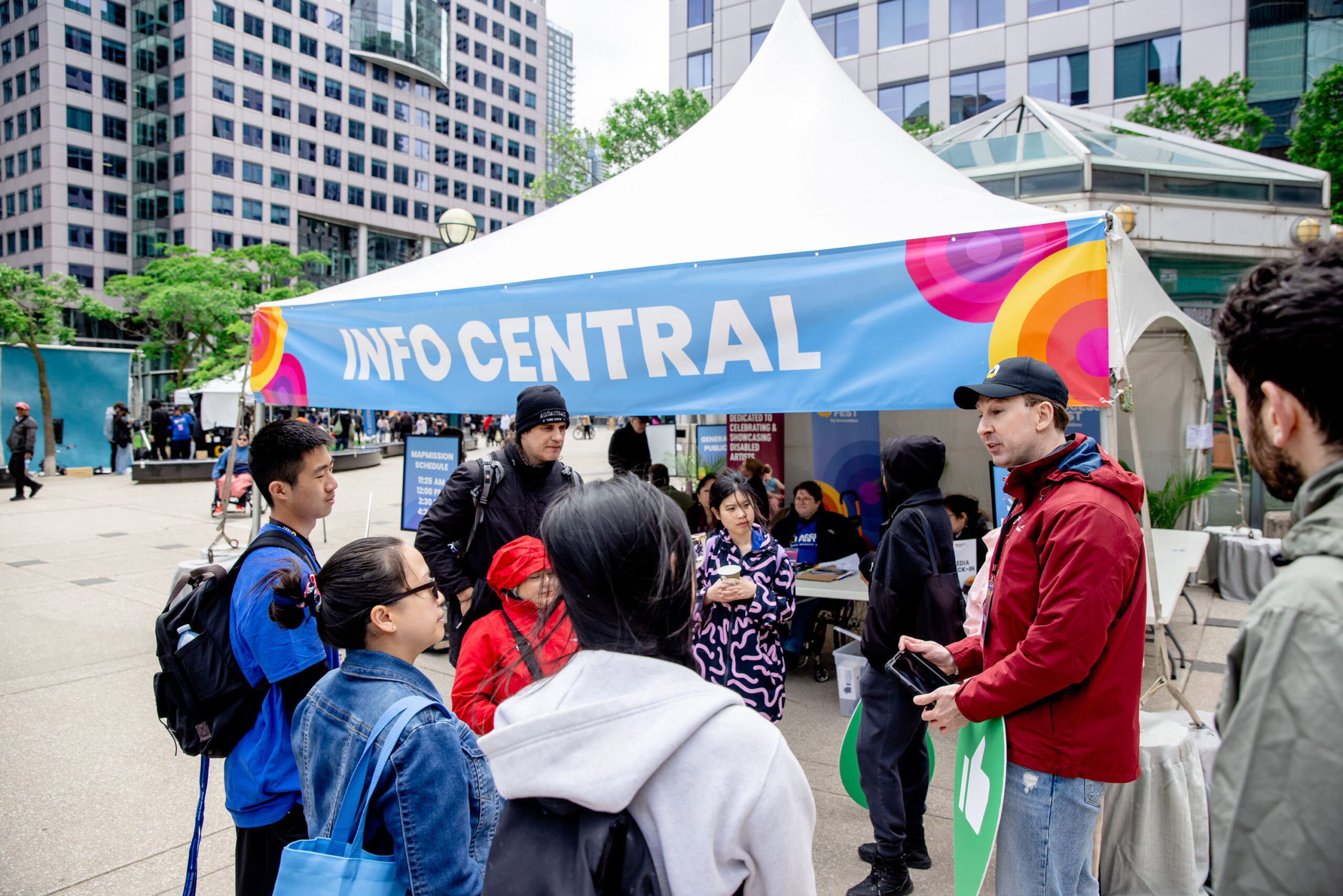
Conversations That Stayed with Me
One of the most unforgettable parts of my day was talking with a father and son who had travelled from Brampton. The son had recently lost his sight and partial mobility after an accident. He came seeking community, not sympathy. Our conversation was quiet, grounded, and hopeful. They left with resources; I left with a renewed belief in why spaces like this matter.
The Unfiltered AF Talks were bold, honest panels led by disabled voices discussing youth leadership, media representation, and inclusive design. These weren’t corporate panels. These were declarations: “We’re here. We’re leading. Get used to it.”
Other conversations unfolded with leaders across sectors – from Chair of the National Building Code Committee to a DEI leader who made the trip from Ottawa simply to be part of the community. I met people who had lived in Europe, Japan, and beyond, each reflecting on the global gaps in access. And I met researchers who saw the event as a case study in how inclusion can be led from the grassroots, not the top down.
Access is a Culture
Was it perfect? No. Wayfinding could have been stronger. The temporary accessible path felt unstable. Real-time communication and coordination between staff members and volunteers, such as in the case of interpreters and assistance needs, can be improved. But what matters is that feedback was welcomed, not deflected. Organizers made it clear: mistakes are part of growth, and growth only happens when we listen.
AccessFest wasn’t just a one-day event. It was a movement in motion. A real-time learning space where accessibility was expected, not exceptional. Where disabled people weren’t “accommodated” – we were celebrated, centered, and leading.
Final Thoughts
AccessFest didn’t just check boxes. It created belonging. It brought people together from across Canada and even beyond to share stories, study the event, and reflect on how we can reimagine public space. For youth and older adults with disabilities, and everyone who’s felt on the margins of cultural life, this was a celebration of being at the center.
So yes, my sandals were the wrong choice. The winds were wild. But the experience? Unforgettable.
Access isn’t just about ramps or signs. It’s about culture. It’s about trust. And it’s about time we all moved forward – together.
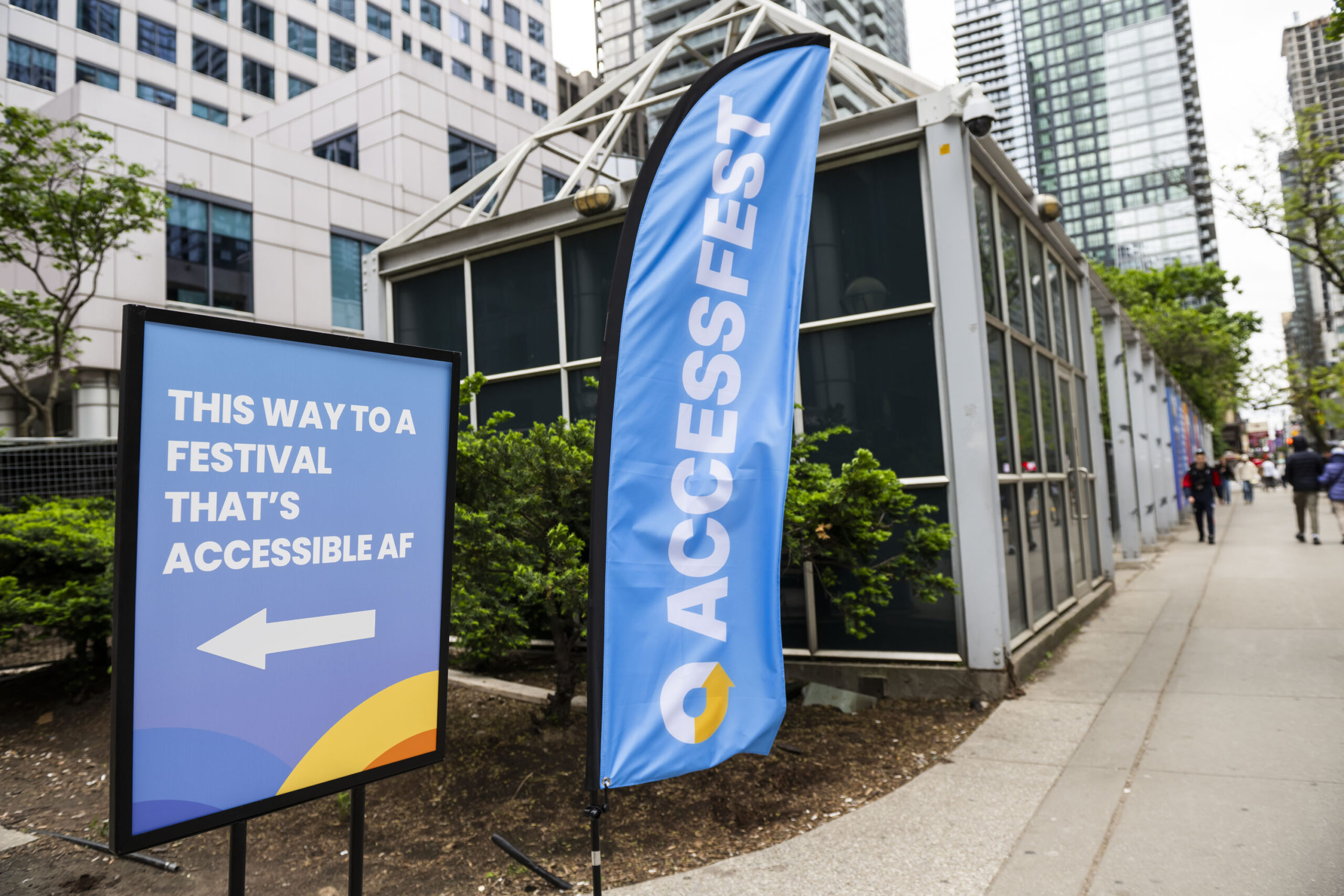
Note: This blog was written by Simran Bhinder, a sighted staff member and Project Coordinator at the Alliance for Equality of Blind Canadians (AEBC), to support inclusive storytelling.
Want to experience the energy of AccessFest for yourself?
Stay tuned for updates on AccessFest 2026 and other community-powered events by following @access.fest and @accessnowapp, or by signing up for our newsletter at accessnow.com.

